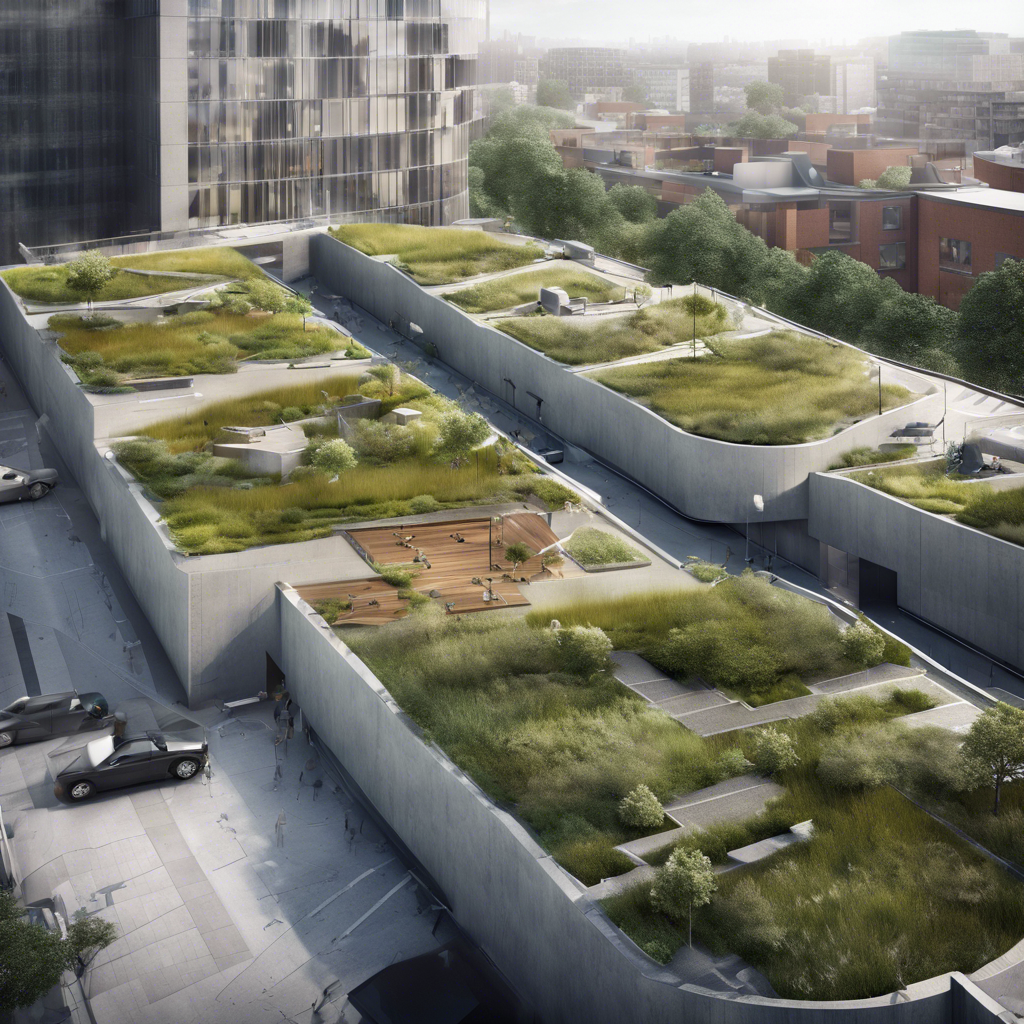Embracing Sustainability: Green Roof Benefits for Sustainable Urban Development
- Koula Tafea
- Jul 11, 2024
- 2 min read
In the pursuit of a more sustainable future, urban development practices are evolving to embrace environmentally friendly solutions. One such innovation that has been gaining momentum in recent years is the integration of green roofs in urban landscapes. Green roofs, also known as eco-roofs or living roofs, offer a myriad of benefits that extend beyond their aesthetic appeal, making them a valuable asset in the quest for sustainable urban development.
Understanding Green Roofs
Green roofs are essentially vegetated roof covers that consist of a waterproofing membrane, a root barrier, a drainage system, and a growing medium that supports the growth of vegetation. These roofs can be extensive, featuring a thin layer of vegetation like succulents and grasses, or intensive, with a more diverse selection of plant life including shrubs and trees. The concept of green roofs dates back centuries, but it is only recently that their potential benefits have been fully appreciated in the context of sustainable urban development.
Environmental Benefits
1. Improved Air Quality
Green roofs act as natural air filters, absorbing carbon dioxide and releasing oxygen into the atmosphere. The vegetation on green roofs also helps trap airborne pollutants, thereby improving air quality in urban areas.
2. Urban Heat Island Mitigation
Urban heat islands, characterized by higher temperatures in urban areas compared to rural areas, can be mitigated by green roofs. The vegetation on green roofs helps reduce the heat absorbed and re-radiated by traditional roofing materials, ultimately lowering ambient temperatures.

3. Stormwater Management
Green roofs are effective in managing stormwater runoff by absorbing rainwater and reducing the burden on urban drainage systems. This can help prevent flooding and mitigate the strain on municipal water treatment facilities.
Economic Benefits
1. Energy Efficiency
Green roofs provide natural insulation, reducing the energy consumption required for heating and cooling buildings. By improving a building's energy efficiency, green roofs can lead to significant cost savings over time.
2. Extended Roof Lifespan
The vegetation and soil on green roofs protect the underlying waterproofing membrane from UV radiation and extreme temperature fluctuations, extending the lifespan of the roof and reducing maintenance costs for building owners.
Social Benefits
1. Enhanced Aesthetics
Green roofs enhance the aesthetic appeal of urban areas, providing green spaces for residents to enjoy amidst the concrete jungle. They offer opportunities for urban agriculture, recreation, and relaxation, contributing to the overall well-being of city dwellers.
2. Biodiversity Conservation
Green roofs promote biodiversity by providing habitat for birds, insects, and other wildlife in urban environments. This contributes to the conservation of local ecosystems and enhances the ecological balance in cities.
Conclusion
As cities grapple with the challenges of rapid urbanization and climate change, the adoption of green roofs presents a sustainable solution that benefits the environment, the economy, and society at large. By harnessing the power of nature to transform urban landscapes, green roofs offer a path towards creating healthier, more resilient cities for future generations to thrive in.
Next time you look up at a city skyline, take a moment to consider the potential of green roofs in shaping a more sustainable urban future.
Let's build a greener world, one roof at a time!
SEO Keywords: Green Roofs, Sustainable Urban Development, Environmental Benefits, Economic Benefits, Social Benefits




Comments